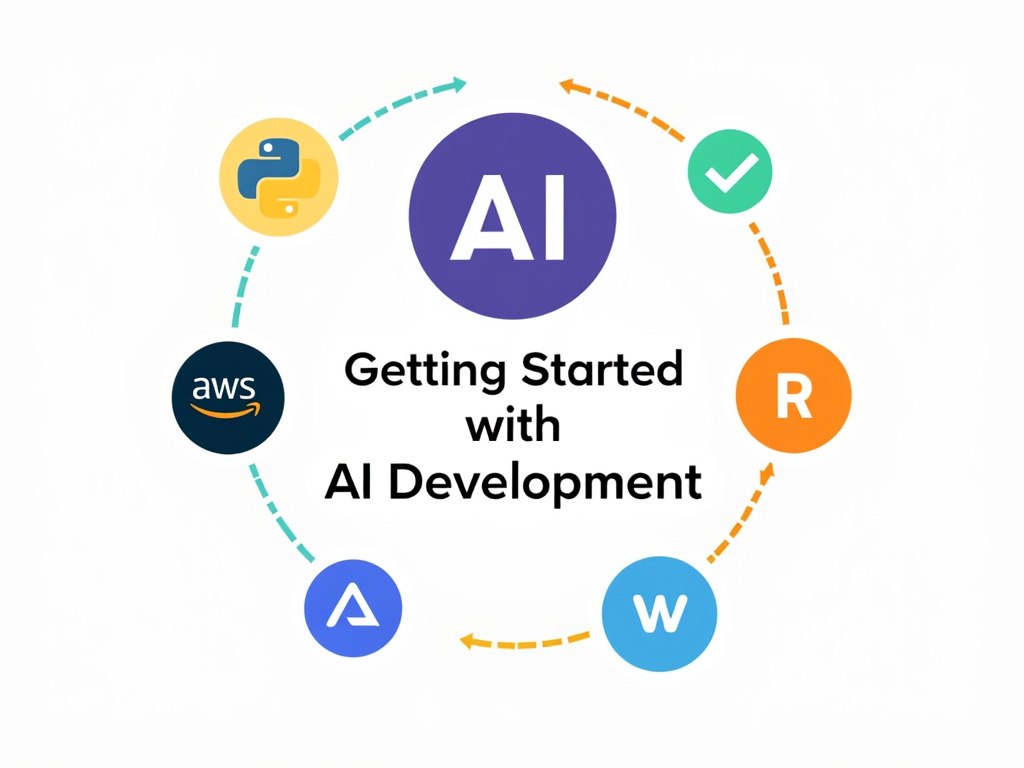AI Development: A Comprehensive Guide for Developers
AI Development: A Comprehensive Guide for Developers
Artificial Intelligence (AI) development is revolutionizing software engineering. As a developer, you need to understand the core principles, tools, and techniques necessary to build AI-driven applications. This guide provides a deep dive into AI development, offering actionable strategies to help you succeed.
Table of Contents
- Getting Started with AI Development
- Understanding Data Collection and Preprocessing
- Mastering AI Frameworks and Libraries
- Implementing AI Ethics in Development
- Testing and Benchmarking AI Models
- Optimizing User Experience (UX) for AI Applications
- Additional Resources
1. Getting Started with AI Development
To begin developing AI applications, you need a solid understanding of the fundamentals of AI, including machine learning (ML), deep learning, and data science. Start by learning essential programming languages such as Python, JavaScript, and R, which are commonly used in AI development.
Familiarize yourself with popular AI platforms like AWS AI, Azure AI, and IBM Watson, which provide a variety of tools and resources to build, train, and deploy AI models. Understanding the basics of cloud-based AI platforms and their community forums can provide you with invaluable support and guidance.

Learn more about becoming an AI developer from Coursera’s AI Developer Career Guide .
2. Understanding Data Collection and Preprocessing
Data is the backbone of any AI model. Successful AI development depends on high-quality data collection and preprocessing. Explore various methods for data collection, such as web scraping, using public datasets from platforms like Kaggle or AWS Data Exchange, and even generating synthetic data.
Once collected, ensure your data is clean and well-prepared through preprocessing steps like normalization, data augmentation, and handling missing values. This process is critical to prevent “garbage in, garbage out” scenarios, where poor-quality data leads to inaccurate models.

Discover more on data preprocessing at IBM Developer’s AI Guide .
3. Mastering AI Frameworks and Libraries
AI development relies heavily on frameworks and libraries that provide the necessary tools to build models effectively. Key frameworks like TensorFlow, PyTorch, and Keras are essential for developing and deploying AI applications. These frameworks support various programming languages, making them versatile for different types of AI projects.
Understanding when and how to use these frameworks is crucial. For instance, TensorFlow is ideal for complex neural network models, while PyTorch offers dynamic computation graphs that are helpful in research settings.

Explore more about AI frameworks from Xenoss’s Guide on AI Tools .
4. Implementing AI Ethics in Development
As AI development advances, so does the need for ethical considerations. Addressing issues like data privacy, algorithmic bias, and transparency is vital to ensure responsible AI use. Developers should implement fairness checks, anonymize sensitive data, and maintain transparency in their AI models.
Consider frameworks for ethical AI development and regularly audit your models for bias and privacy compliance to align with global data privacy laws.

Learn more about ethical AI practices from Scaler’s Guide on Ethical AI .
5. Testing and Benchmarking AI Models
Testing and benchmarking are critical components of AI development to ensure that models perform as expected. Different testing types—such as unit testing, regression testing, and user acceptance testing (UAT)—help verify that AI models are robust and meet user requirements.
Developers should use tools like Google Firebase for A/B testing and Hotjar for user engagement analysis to ensure that their AI applications meet performance benchmarks.

Find more on AI testing best practices at Spaceo’s AI Software Development Guide .
6. Optimizing User Experience (UX) for AI Applications
The success of an AI application is not solely dependent on its algorithms but also on its usability. Focus on creating intuitive user interfaces that encourage engagement with the AI features. Use A/B testing to optimize UI/UX design and understand user behavior patterns to continuously improve the application.

Read more about optimizing AI UX design at IBM Developer .
Additional Resources
- OpenAI Platform for Developers
- Springboard’s Guide to Becoming an AI Engineer
- IBM’s AI Development Resources
- DataCamp’s AI and Machine Learning Courses
By mastering these core areas, developers can effectively build and deploy AI applications that are innovative, ethical, and user-friendly.
